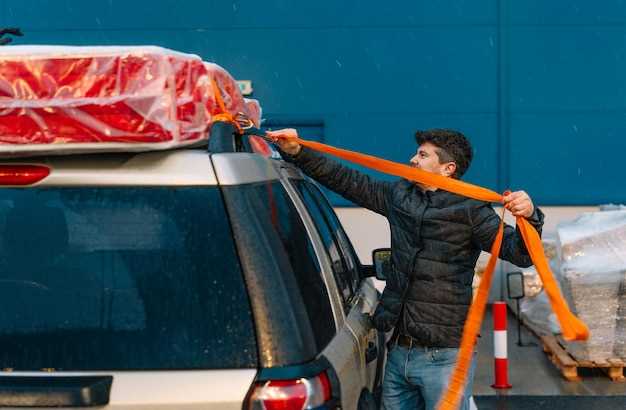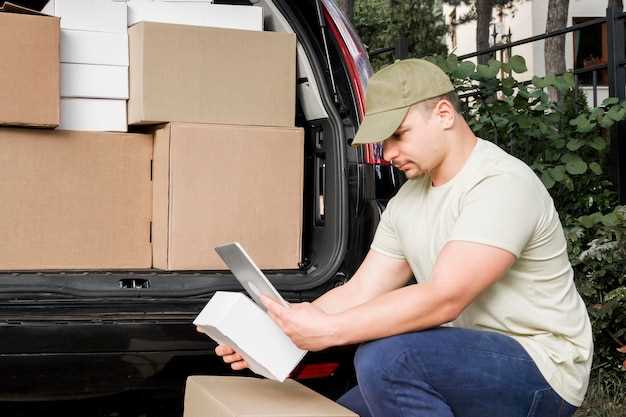
Preparing your car for long-distance shipping is a crucial step to ensure it arrives at its destination in excellent condition. Proper prep can help avoid potential damage during transit and simplify the process for both you and the shipping company. By following a few essential guidelines, you can protect your vehicle and make the shipping experience smoother.
First and foremost, before shipping your car, it’s important to conduct a thorough inspection. Check for any existing dents, scratches, or mechanical issues that may need addressing. Documenting your vehicle’s condition with photographs will provide you with a reference in case of any disputes after shipping. Additionally, it is advisable to remove all personal items from the car, as these can shift during transport and may lead to unforeseen damage.
Another key aspect of car prep is ensuring that your vehicle is in good working order. This includes checking fluid levels, tire pressure, and battery condition. A well-maintained car is less likely to encounter problems during transit, making it easier for the shipping company to handle. By taking the time to prepare your car properly, you can significantly reduce the risk of complications and ensure a hassle-free shipping experience.
Inspecting and Maintaining Your Classic Car Before Shipping

Before shipping your classic car, conducting a thorough inspection is crucial to ensure it arrives in pristine condition. Begin by examining the exterior for any pre-existing damage, such as scratches, dents, or rust spots. Document these issues with photographs to have a record for both yourself and the shipping company.
Next, check the functionality of all lights, including headlights, taillights, and turn signals. This not only enhances safety during transport but also ensures compliance with regulations. Assess the tires for proper inflation and tread wear; under-inflated tires can suffer damage during shipment.
Under the hood, inspect fluid levels, including oil, coolant, and brake fluid. Topping off these fluids can prevent leaks and potential damage during transport. Additionally, ensure the battery is secure and has a sufficient charge. A weak battery can lead to complications upon arrival.
Clean the interior and exterior of your classic car thoroughly. This step not only presents a well-maintained appearance but also allows for a closer inspection to identify any hidden issues. Remove any personal belongings from the car, as shipping companies typically do not insure items left inside vehicles.
Finally, consider obtaining a professional assessment from a mechanic who specializes in classic cars. They can provide expert insights on any potential issues that may arise during shipping, ensuring that your vehicle remains in excellent condition throughout the journey.
Choosing the Right Shipping Method for Classic Vehicles
When it comes to shipping classic cars, selecting the appropriate method is crucial for ensuring their safety and condition during transit. There are mainly two methods of shipping: open transport and enclosed transport. Each option has its benefits and considerations.
Open Transport is a more economical choice that involves loading multiple vehicles onto an open trailer. While this method is cost-effective, it exposes the classic car to environmental elements like rain, dust, and debris. If your classic vehicle is less rare or valuable, and you are confident in its ability to withstand some exposure, this may be a suitable option.
Enclosed Transport provides optimal protection for classic cars. This method uses a fully covered trailer, shielding the vehicle from the elements and potential damages during transit. For high-value or rare classic vehicles, this is often the preferred choice, as it minimizes risk and ensures the car arrives in pristine condition. However, this method tends to be more expensive than open transport.
In addition to the shipping method, consider the prep required before the vehicle is shipped. Proper preparation includes securing loose parts, documenting the car’s current condition, and removing personal items to prevent any damage during the transport process. It’s essential to work with a reputable shipping company experienced in handling classic cars to ensure the best practices are followed.
Ultimately, when choosing the right shipping method for your classic vehicle, weigh the importance of cost versus protection. Evaluating the value of your car and its unique characteristics will guide you in making an informed decision for a safe transport experience.
Packing and Securing Your Classic Car for Transport

Preparing your classic car for long-distance shipping involves careful packing and securing to ensure its safety. Start by thoroughly washing the car to remove any dirt and debris, which can cause scratches during transport. Once cleaned, give the car a detailed inspection to identify any existing damages and document them with photographs.
When it comes to packing, remove any personal belongings and loose items from the interior, including floor mats and removable accessories. These items can shift during transit, potentially causing harm to the vehicle’s interior. If your classic car has a convertible roof or fragile parts, consider using protective covers or padding for added safety.
Securing your classic car is crucial. Use high-quality tie-down straps to secure the vehicle to the transport bed or trailer. Ensure that the straps are applied in a way that distributes the pressure evenly across the chassis, avoiding any damage. Additionally, using wheel chocks can help prevent movement during transit.
Another important step is to check the battery charge and fluid levels. Ensure that the fuel tank is not more than a quarter full to reduce weight and minimize the risk of leaks. Review the tire pressure and inflate them to the recommended levels to prevent flat spots during shipping.
Finally, consider working with a professional auto transport company that has experience in handling classic cars. They will have the right equipment and knowledge to ensure that your vehicle is properly packed and secured for a safe journey.




